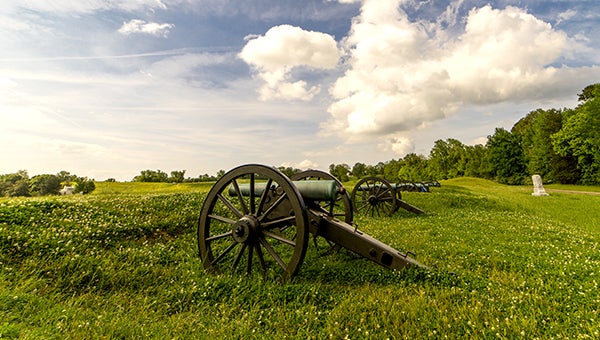SIEGE 160: Truce to bury dead delays siege, gives opposing troops a chance to meet
Published 8:00 am Saturday, May 27, 2023

- The Vicksburg National Military Park is not only the most popular tourism destination in Vicksburg, but is routinely among the largest, most popular destinations in Mississippi.
Editor’s Note: This is the second in a series by The Vicksburg Post commemorating the 160th anniversary of the Siege of Vicksburg.
It was one of the more unusual events of the Siege of Vicksburg.
In the early stages of the siege, Union and Confederate troops met on the field of battle to renew acquaintances, trade goods and get to know one another better under a truce called by Confederate Gen. John C. Pemberton for humanitarian reasons.
After two days of bloody and unsuccessful assaults on the Confederate defenses at Vicksburg, Maj. Gen. Ulysses Grant’s troops continued building siege lines in preparation to put the city under siege while the bodies of dead Union troops that participated in the attacks continued to lie in the hot May sun decomposing with the odor affecting the Confederate troops.
The problem was severe enough for Pemberton on May 25 to seek a truce to allow the Union troops to bury their dead.
“Pemberton has a great quote where he says, ‘In the name of humanity I’m requesting a formal truce to enable your army to bury their dead,’” said Andrew Miller, lead park ranger at the Vicksburg National Military Park. “Grant, who had not accepted a truce in the previous days, receiving this formal request, decides that he will allow it to happen.”
For two hours on the evening of May 25, Union troops walked out of their fortifications to collect their dead comrades for burial.
“While this formal truce happens for this humanitarian sake of burying the dead, the Union and Confederate soldiers have an opportunity to come together between the lines,” Miller said. “This is where individuals start realizing they know others on the opposing force; old friends, distant relatives, even very close and personal family members start realizing that they’re opposing one another between the lines.”
The truce also gives Union engineers an opportunity to study the construction of the Confederate defensive works.
“Which is interesting because obviously the Confederate officers that were talking to Pemberton about initiating a truce, were also concerned that ‘we can’t allow the federalists close to our lines,’” Miller said, pointing out the Union officers would find a way to exploit weaknesses in the defenses.
Apparently, he said, that is what one Union engineer did.
“He actually walks the Confederate line in front of his front,” he said. “He’s engaging with Confederate officers and enlisted men but he’s really surveying their terrain and understanding how strong it is.
“That really provides a lot of intelligence to Grant’s army and throughout the next couple of days as they’re starting to make their preparations for digging their defensive positions,” he said. “Eventually, starting by the beginning of June, they’ll start their approach trenches, digging those trenches from the Union lines to the Confederate lines, which will enable them to eventually dig under the Confederate earthworks and exploit them.”
After the remainder of Grant’s troops arrived in Vicksburg on May 18, Gen. William Tecumseh Sherman on May 19 ordered an unsuccessful attack on the Confederate’s Stockade Redan and on May 22, Grant ordered two attacks along the Confederate’s 8-mile defensive front — one in the morning and the other in the afternoon — both were unsuccessful.
“It’s at that point that his phrase was ‘we will out-camp the enemy; we’re going to initiate our siege operations;’ he’s going to start requesting reinforcements from different Union departments or federal departments,” Miller said, adding the move enables Grant to bring more men to Vicksburg and complete surrounding the city.
It also allows him to detach troops to protect his rear while he’s conducting the siege.






